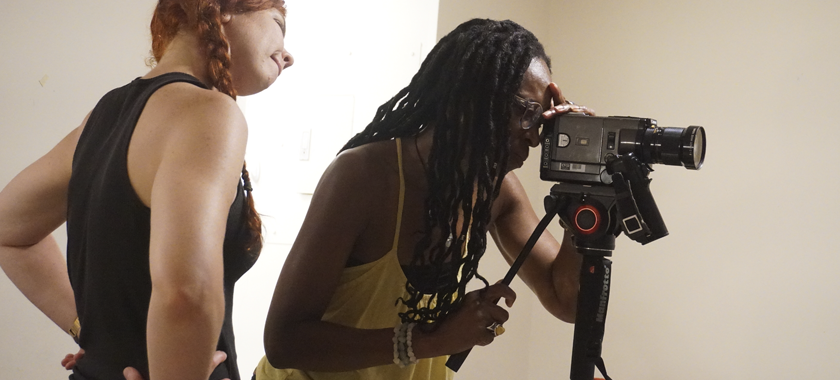How to: Market Your Independent Film
What you need to know about marketing your film, from Ira Deutchman, a producer, distributor, and marketer of independent films.
As a filmmaker, you know how to make a film and probably know how to get it exhibited but likely know a lot less about how to attract an audience.
We’re shedding light on the topic courtesy of Ira Deutchman, a producer, distributor, and marketer of independent films and founder of two distribution companies–Fine Line Features and Emerging Pictures–that had an important impact on independent filmmaking.
Deutchman has spent the better part of the last 45 years watching, studying, teaching, distributing, marketing, and producing movies. Among them: Searching for Mr. Rugoff, a documentary he directed and produced about theater owner and film distributor Donald Rugoff.
For much of his career, Detuchman has been associated with Columbia University, where he is Professor of Professional Practice in the School of the Arts, where he was Chair of the Film Program from 2011-2015. His mantra with his Columbia students: “distribution is easy, marketing is hard.”
The Marketing Angle
‘Distribution is easy’ because filmmakers are able to put films in places that they never could before—directly through platforms like YouTube and Vimeo, into theaters on their own or with the help of smaller distributors or theater bookers, and to online streamers with the help of aggregators. The marketing angle is harder, says Deutchman, because putting it out there does not equate with it being found or seen.
Business Models for Content
Before you think more concretely about marketing, you’ll want to consider how and when you’ll release your content.
Says Deutchman: “One model is free. Free is never really free, but it’s usually based on advertising or sponsorship-based situations. Network, cable television, and YouTube are great examples of this. The second is pay-per-view. Theatrical release and videos on demand are both examples. And there there’s subscription based–the main business model that younger audiences adhere to these days. Lastly there’s ownership, which is DVDs and download-to-own, when people want to collect things.”
According to Deutchman, when you’re controlling a piece of content, your goal is to maximize its profitability by navigating those various business models as well as to consider what time of year you’ll be releasing your film. If you have a festival strategy, for example, then you might want to release it in the marketplace behind film festivals to take advantage of the momentum you create.

Consumer Decisions
When people are making a decision about what they’re going to buy—whether it’s walking into a store to buy clothing or you’re in the market to buy a new appliance for your home, etc-–there are certain factors to consider. Deutchman listed several, including convenience, what kind of consumer experience the product offers, price, variety, and prestige and exclusivity. All will play a role in whether someone will decide to watch your film.
An additional factor to consider is scarcity vs abundance. “Scarcity is a marketing concept that is really hard to beat, I call it the ‘velvet rope’ effect. Basically, when people are told that they can’t have something it makes them want it more,” says Deutchman.
For example, if something is offered for a limited time only at a select venue or venues, it forces people to run and see it. Such was the case for Apichatpong Weerasethakul’s Neon-distributed film “Memoria,” which played no more than one theater at any given time. Add to that, Neon emphasized that there were no plans to offer via streaming platforms or a physical release, making the theater the only possible place to experience the film.
“What we have now instead of scarcity in the current marketplace, is abundance. There’s too much choice,” says Deutchman. The dilemma, according to Deutchman, is “How to create urgency in a world in which there is the perception of everything being available whenever you would like.”
Third Party Validation
Third party validation is key to the success of your film, and can come in several forms. Deutchman cites that one of the more traditional forms is that of the critic—an individual whose opinions trickle down to people who are interested in film who read the reviews—and who can point people towards movies that they might not see otherwise. There are fewer and fewer critics these days, with few local markets.
Other forms are festival curators, who provide a service to filmmakers by pointing consumers toward movies. Deutchman argues that festivals are gaining in importance given that critics are “easing into the background.” Other curators include folks who work for networks or streaming platforms like HBO and Netflix, who choose things that they believe their audience wants. Word of mouth is also a longstanding form of third party validation.
According to Deutchman, you should also consider computer algorithms and social media when making your movie. He recommends that you have the right metadata connected to your movie so it comes up in the right places. “Learning how to game these systems or finding somebody who can game these systems so that your film pops up when people are looking for things on search or on social media, is so important,” stresses Deutchman.
Social media, says Deutchman, “is, to me, one of the more important ways of curation. Use social media to get other people to support your film or your project.” Consider opinion aggregators like Rotten Tomatoes and Metacritic, as well.

Marketing Tools
There are a limited number of marketing tools at your disposal. One is public relations, or working with the press to secure coverage of your film. “It can be everything from working with critics for reviews, pitching stories to publications both online and offline, interviews with your stars, getting your talent on talk shows, and more,” says Deutchman.
However, this type of marketing costs money (Deutchman suggests budgeting at least $5,000 for a publicist for a small independent film) and Deutchman cautions that as independent filmmakers you’re likely to be at a distinct disadvantage when competing against people who have the resources to spend a lot of money on publicity.
This does not mean that securing press coverage is out of the question. “I would say that attending film festivals is one of the best ways to understand and get to know the press,” says Deutchman.
“If you can manage to, get yourself invited to some of the parties or situations where press might be in the room. Consider these potential networking opportunities, just don’t be blatant about it. It’s taken me many years to build up the relationships that I do have with press people, and believe me when it’s time to activate those relationships I don’t hesitate,” he continued, noting that nine tenths of the time he gets turned down. “It’s the tenth situation that you’re hoping for.”
Deutchman points out that festival curators and press are human beings that “are subject to the same set of expectations that consumers have. Their expectations are creating what will eventually become the reaction to the film, so part of the job becomes trying to understand the negatives in your own movie.” If you anticipate the negatives, and address them in your outreach you can potentially diffuse criticism, giving insight into your decision-making process and how it ultimately supports your film.
Promotions, as opposed to public relations, are basically a barter arrangement between you and other people who are selling things. For example, a book tie-in, music tie-in, or product or service tie-in. “For documentary work, if you’re talking about films that are on a particular subject matter, you’re talking about potential affinity groups who have a mailing list that could have value to you,” says Deutchman.
This could also include word of mouth screenings that can help spread the word amongst certain constituencies. Deutchman advises doing deep research into everybody who might be interested in your film’s subject matter. This includes a constituency or constituencies that you’re going to reach out to, including press, so that you can best target your outreach.
There’s also media buying, which in the traditional sense, are radio or TV ads. Deutchman notes that this is the area that most independent films can least afford. However, presently this also includes social media, which can be done in a pretty targeted way on a relatively low budget.
Whatever the platform, Deutchman recommends taking a simple approach, getting to the essence of your message to make sure that you’re concentrating on the most entertaining element of your movie (could be provocative or depressing material).

Setting Expectations and Creating Urgency
“Our job as marketers is to create the right set of expectations,” says Deutchman. “That the audience is going to feel that the film delivered on those expectations.” He gave the example of what not to do, which is giving away every big moment of your film. “You’ve got to get across just enough that you’re making people want more.” Ask yourself and consider thoughtfully “What’s the hook?”
Deutchman places an emphasis on cleverness and coming up with ways to get people interested enough in your film to write about it, talk about it, or share it on social media. Landing on the right title for your film, and creating strong graphics and imagery are part of the strategy and creating your hook.
Deutchman says the hook can be as simple as having gotten into a reasonably respected film festival. If this is the case, local press might be covering a local film festival and you may be able to get on their radar. One way in is getting to know the publicist for that festival, as they can help guide you toward press opportunities. They can also help to distribute your publicity materials to the right people and let them know that there’s a press screener available so that press can see your film in advance.
According to Deutchman, the question you should ultimately be asking yourself is “What is going to create the urgency to see this as quickly as possible? You want to avoid falling off a potential viewers’ radar screen and into the ether of Netflix menus where there are 50,000 other things to choose from.”
–Compiled by Amy Aronoff, Senior Communications Officer
These tips and insights in this article were shared as part of a NYFA Fiscal Sponsorship event. NYFA Fiscal Sponsorship’s quarterly no-fee application deadlines are June 30, September 30, December 31, and March 31. We also accept Out-of-Cycle Review applications year-round. Reach out to us at [email protected] for more information.
Interested in more film resources? Visit our “For Filmmakers” page. Sign up for NYFA News and receive artist resources and upcoming events straight to your inbox.





